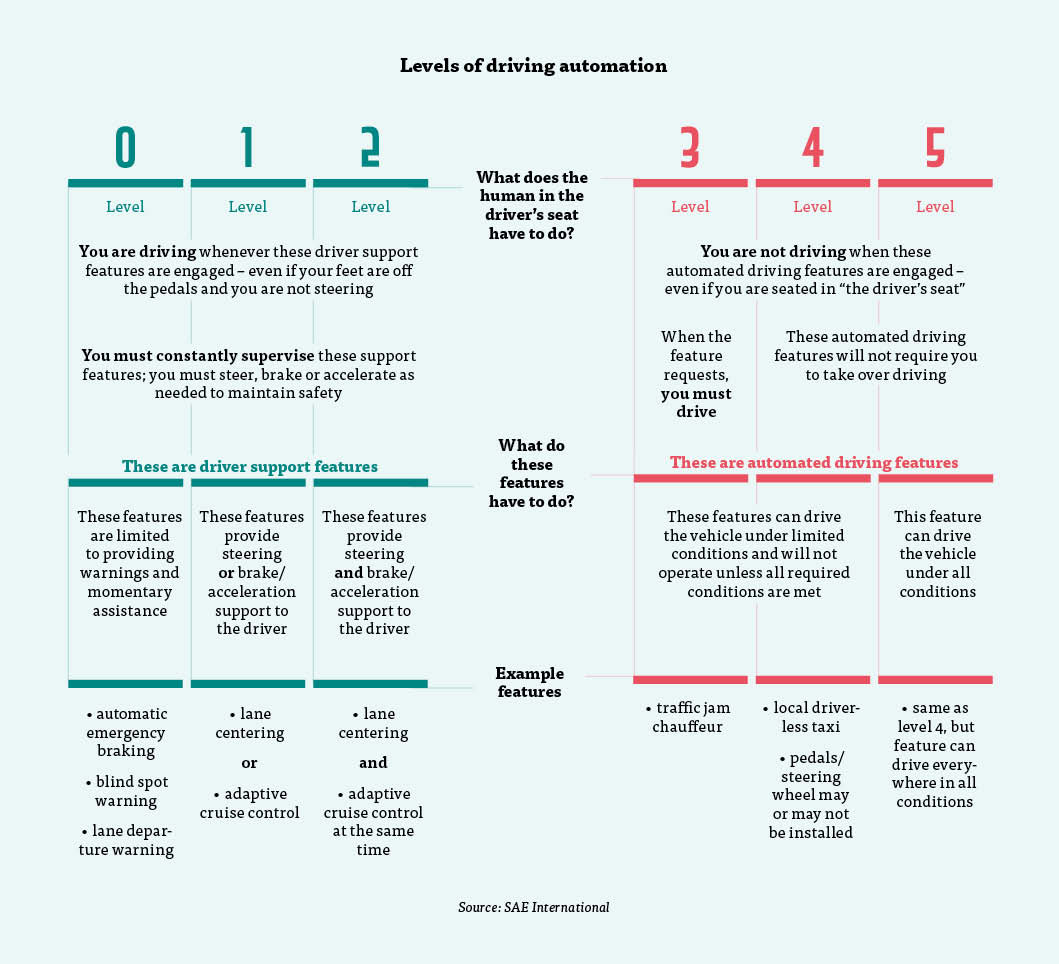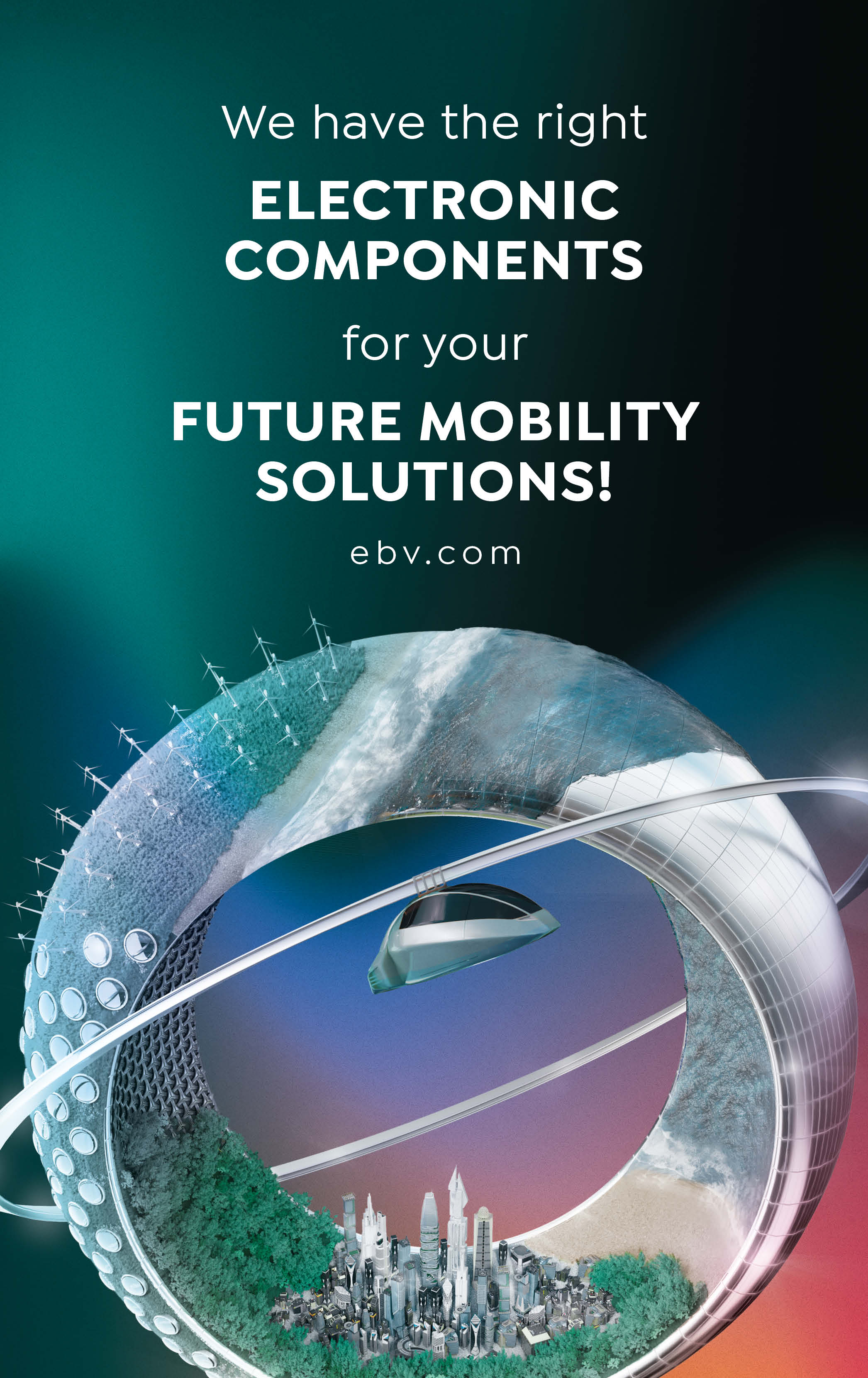These days, most new cars already have certain kinds of automated driving functions. In future, however, we will encounter vehicles on the road that can drive completely autonomously.
Against the backdrop of the general chaos of daily traffic, there are high hopes that vehicles that don’t need a driver to travel on the road, across the water, or through the air will bring many benefits. “Autonomous vehicles (AVs) offer significant opportunities to improve road safety as well as transform mobility, boost supply chains, create jobs, increase equity and reduce emissions,” says General Counsel Ariel Wolf from the Autonomous Vehicle Industry Association (AVIA).
The transition to a fully automated driving car (i.e. a car that can drive without any human intervention) won’t happen in one huge leap, but in several smaller stages. The SAE International (Society of Automotive Engineers) has defined six stages of autonomous driving, ranging from Level 0 (no automation) through to Level 5 (driverless driving).
Detecting the environment
To be able to automate the driving process, the vehicle must first be able to detect its environment. All manner of different sensors are used for this purpose: “Each individual system has its strengths, but also its weaknesses,” explains Tim Freialdenhoven, a scientist at the Fraunhofer Institute for High Frequency Physics and Radar Techniques (FHR). Cameras detect colours and fonts, radars measure distance and speed, and LiDAR creates highly accurate 3D images of the environment.
The latest developments are 4D radar systems that detect their surroundings in four dimensions: distance, speed, horizontal angle and now also height. Jana Rosenmann, Head of ZF’s Electronics Division and Advanced Driver Assist Systems (ADAS): “With its high object and scene recognition and long range, imaging radar is a key technology that meets the high requirements of Level 3 and 4 automated driving at a competitive price level.”
For example, the Level 4 concept vehicle from Pony.ai, a company for autonomous driving, is equipped with 17 sensor systems in order to achieve a 360 degree viewing range of 200 metres and eliminate dead zones around the vehicle. In a bid to ensure that the design aspect doesn’t get forgotten about and that there is actually enough space for the many different sensor systems, five Fraunhofer Institutes collaborated to find a way of installing the sensors in an inconspicuous and space-saving manner. “We integrate radar and LiDAR sensors into the headlights, which are there anyway and ensure the best transmission conditions for optical sensors and light sources, and keep the sensors free from contamination,” explains Tim Freialdenhoven from the Fraunhofer FHR.
Evaluating captured data
The large volumes of data captured by the sensors have to be recorded, merged and analysed in near-real time – generally using artificial intelligence and machine learning algorithms. This is where the concept of edge computing comes in: the data is saved, processed and analysed in the direct vicinity of the end devices. This can have various different levels: smart sensors filter the data they capture before they pass them on to a system-on-chip in the vehicle.
Here the data of different sensors is merged in order to obtain a precise picture of the environment. For more complex calculations, the data is transmitted to a micro data centre near to the road. The extensive training process of the AI is subsequently carried out in large central data centres. “Edge computing makes it possible to reduce delays during data transfer and thus accelerate the decision-making process or the operation of applications,” explains Wojciech Stramski, CEO of Beyond.pl, a company that operates data centres and provides cloud services.
Communication in real time
Data processing is only one of the requirements to enable highly automated driving. Another important prerequisite is the vehicle’s ability to communicate with its environment in near-real time. 5G is a crucial technology in this respect. The mobile technology standard offers both the availability as well as the guaranteed quality of service that are required for autonomous driving.
Among other things, 5G’s high data rates are used for transmitting high-precision navigation maps to autonomous vehicles. In combination with edge data centres, data processing in the network becomes even faster. Initial 5G tests that have been carried out on the A9 between Nuremberg and Munich have achieved latencies of less than 20 milliseconds. An autonomous vehicle travelling at 100 kilometres per hour would only have travelled 60 centimetres during this time.
53.6 forecast average annual growth in the market for autonomous vehicles between 2022 and 2030.
Source: Grand View Research
Still a long way off for fully autonomous cars
To produce a fully autonomous car, you need more than just the right technologies: you also need the corresponding legal frameworks. In May 2021, the German Bundestag and Bundesrat agreed on a law that, in principle, permits fully autonomous vehicles to drive on public roads in Germany. And in May 2022, the Bundesrat agreed a regulation governing in detail road-use approval and operating ranges. This makes Germany the first country in the world to bring driverless vehicles out of the world of research and into our everyday lives.
So if you’re lucky, you can indeed already encounter highly automated cars on Germany’s roads: Mercedes offers a special system to enable Level 3 highly automated driving for its S-class and ESQ vehicles. It allows drivers to hand over the steering to the system under certain conditions during times of high traffic density or traffic jams on suitable motorway sections in Germany and up to a speed of 60 kilometres per hour.
However, it may take a while before a fully autonomous car is ready to be launched to market: according to a study from the Institute Prognos, it won’t be until after 2040 that the market will have a large selection of cars on offer that can drive from A to B fully autonomously, and which even on rural roads no longer need a driver.


